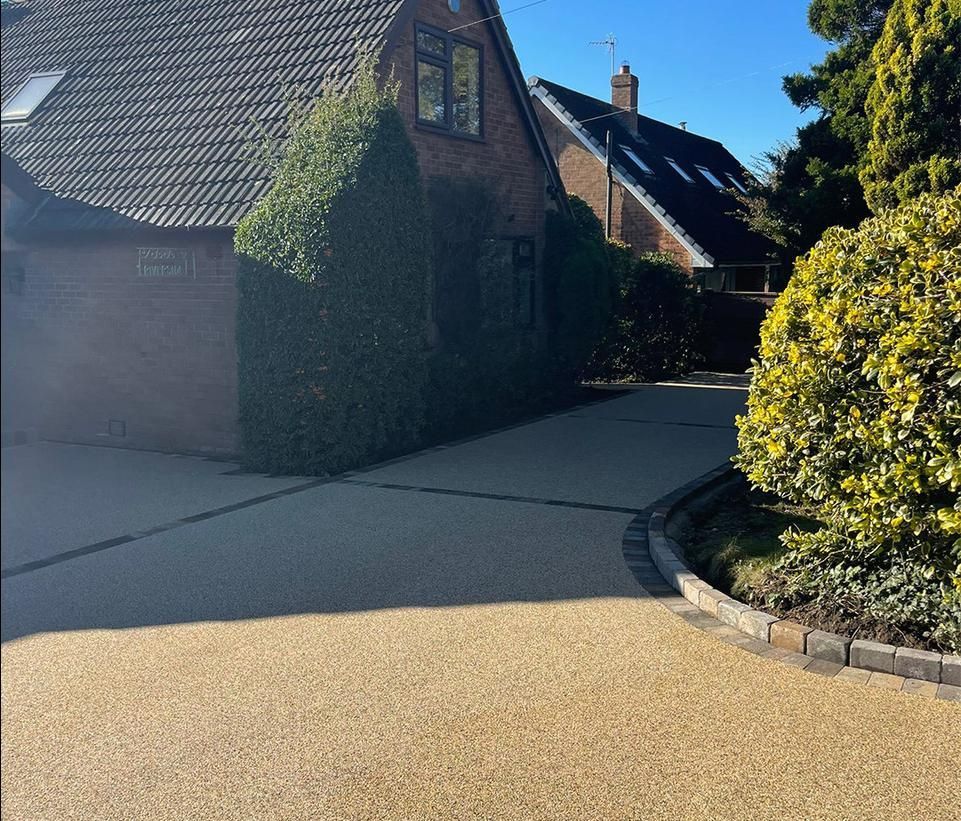Resin Driveways: Built to Last on Clay Soil Foundations
Resin Driveways: Long-Lasting Solution on Clay Soil Bases
In pursuing architectural efficiency and sustainability, resin surfaces have emerged as a game-changer for modern developments. Architects increasingly turn to this versatile material for its unique aesthetic appeal, durability, and eco-friendliness. Let's explore why resin surfaces are becoming a staple in contemporary architectural design.
Cost-Effective Solutions for Modern Builds
As architects strive to balance quality with budget constraints,
cost-effective building materials are in high demand. Resin surfaces offer an attractive solution, providing durability and low maintenance requirements that translate to long-term savings. While the initial investment may be higher than some traditional materials, resin surfaces' longevity and reduced upkeep often result in better value over time.
Design Flexibility and Creativity
One of the most compelling
advantages of resin surfaces is the vast array of design possibilities they offer. Architects can
explore resin surface patterns, colours, and textures to create unique, eye-catching spaces. This versatility allows for greater
architectural creativity, enabling designers to bring their most innovative visions to life.
Sustainability in Urban Development
As
green building design becomes increasingly essential, resin surfaces are a valuable ally in
sustainable urban development. Many resin products incorporate recycled materials and have a lower environmental impact than traditional options. This aligns with the growing demand for eco-friendly solutions in both residential and commercial architecture.
Efficiency in Construction
Modern construction methods are about efficiency, and resin surfaces fit perfectly into this paradigm.
The installation process for resin surfaces
is often quicker and less disruptive than traditional materials, reducing project timelines and minimising client inconvenience. This efficiency is particularly valuable in urban settings where time is of the essence.
Versatility Across Applications
The
versatility of resin surfaces extends beyond aesthetics. These surfaces suit various applications, from interior flooring to exterior pathways. This adaptability makes resin an attractive option for architects working on diverse projects, from residential developments to commercial spaces and public areas.
In conclusion, the growing popularity of resin surfaces in modern architectural design is a testament to their numerous benefits. By offering a perfect blend of cost-effectiveness, design flexibility, sustainability, and efficiency, resin surfaces are helping architects create innovative, beautiful, and functional spaces. As the field of architecture continues to evolve, it's clear that
resin surfaces will play an increasingly important role in shaping the built environment of our cities and communities.
View our YouTube video on the subject below:
You might also like
Clark's Resin Driveways


Contact Us
We will get back to you as soon as possible.
Please try again later.
Certified & Highly Regarded
Call Us Today To Request A FREE Estimate
All Rights Reserved | Privacy Policy | Terms and Conditions Of Use | Longevity Resin Driveways Wolverhampton | Designed by iGen Media Ltd


